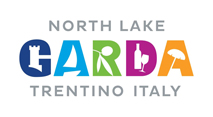Torbole is situated in a privileged location, on the shores of Lake Garda and at the foot of Monte Baldo, in an incredibly panoramic position and enjoys a Mediterranean climate and flora. Before the construction of the Gardesana road, the waters of the lake bordered the houses of the village in picturesque coves and the opening of the horizon to the south has always invited one to bathe in sunshine and blue. No wonder then that its beauty has so often inspired artists, poets and landscape painters.
Michel de Montaigne
The first famous writer to include Torbole in his writings was Montaigne, who mentioned it in his diary. The philosopher and thinker devoted his entire life to writing his Essays, which became a model for later French moralistic prose. Between 1580 and 1581, he travelled for pleasure and therapy in France, Switzerland, Germany and Italy. Upon arriving in Torbole, he described it as follows:
‘Torbole, a small village in the jurisdiction of the Tyrol, is situated at the head of the great lake. On the other side of this head there is a small town and a castle called the Riva (…) you cannot see the end of the lake whose length is 35 miles. The width, as far as we could see, is 5 miles. The northern shore belongs to the Count of Tyrol, while the rest of the lake belongs to the lordship of Venice. There are many beautiful churches here and everywhere there are beautiful parks with olive groves, orange groves and similar orchards. The lake is subject to extremely furious gales when storms break out. Rugged and arid mountains such as we had not seen on the journey rise around the lake’.
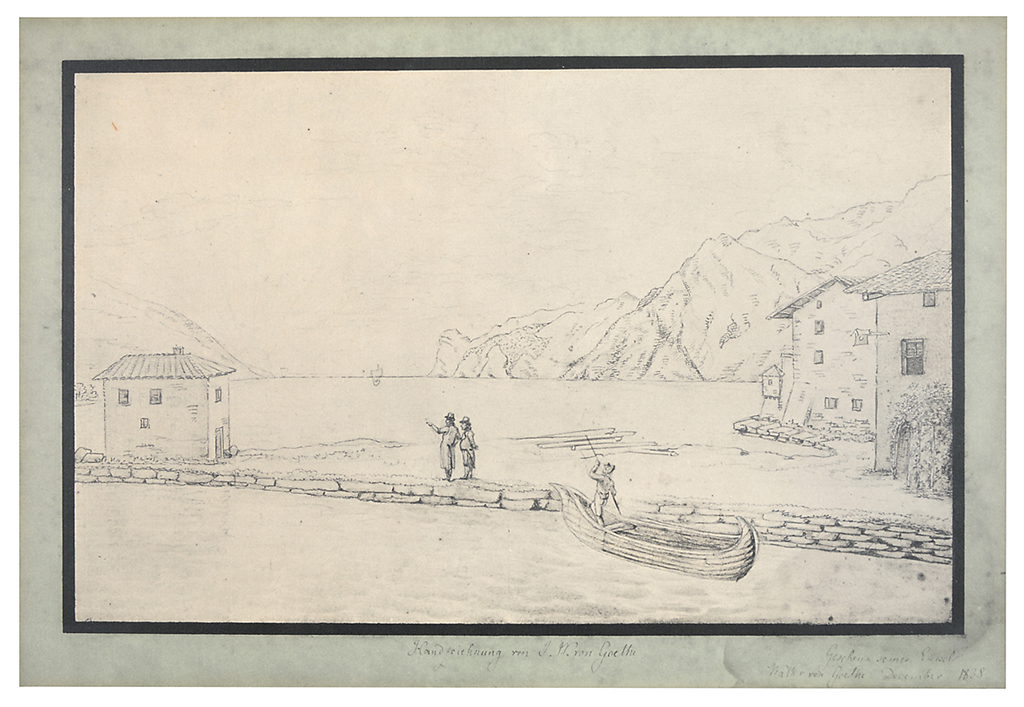
Johann Wolfgang von Goethe
The most famous description of the village of Torbole is undoubtedly that of Goethe, who was intimately fascinated by it and described it in his Journey to Italy. The poet stayed here, at Martino Alberti’s Locanda alla Rosa, on 12 September 1786.
‘With what ardent desire I wish my friends were for a few moments at my side, so that I could enjoy the enchanting view before me. I could have already arrived in Verona this evening, but I would have missed a stupendous spectacle, that of Lake Garda, which I did not want to deprive myself of; so I find myself splendidly compensated for having lengthened my journey (…). From the room where I write, one descends into the courtyard; I have brought my table there, and I have taken a sketch of the view. One can see the lake in almost its entire length‘.
The Grand Tour
Later, in the wake of the great writer and poet, many painters and artists, especially German-speaking, included Torbole as a stop on the Grand Tour, the journey that was made between the 17th and 19th centuries by European aristocrats to nourish their souls with Italian art, history and beauty.
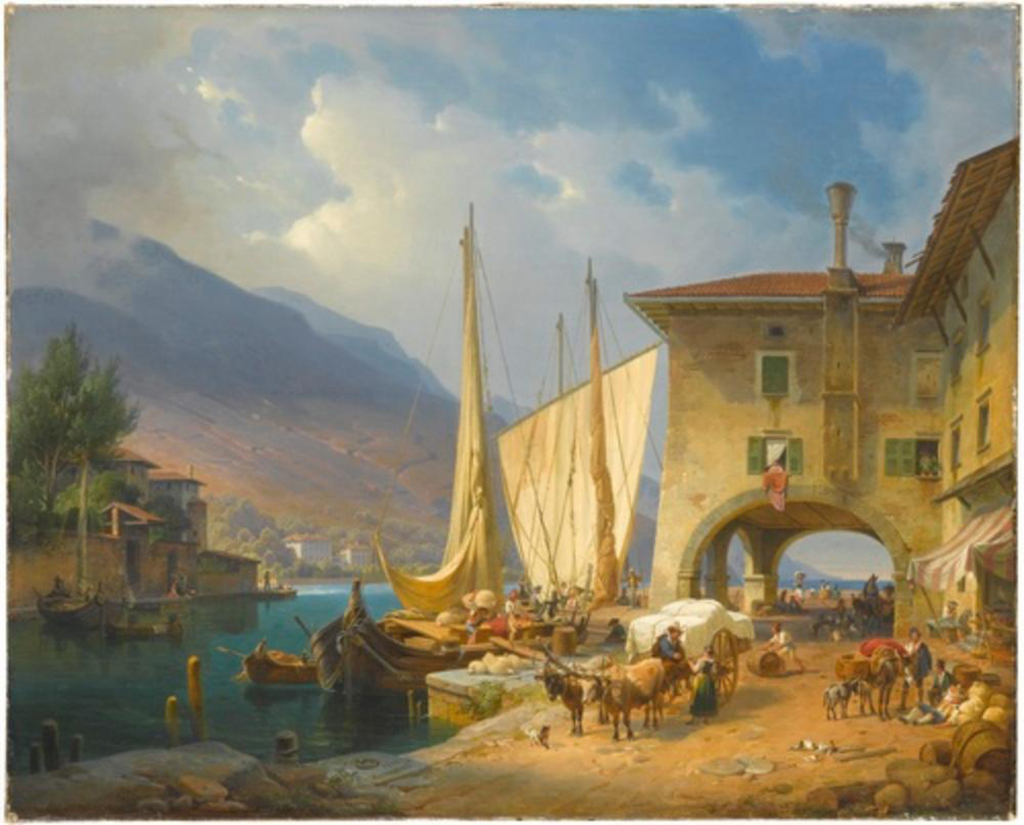
Carl Friedrich Heinzmann
Among them Heinzmann’s splendid Port of Torbole on Lake Garda (1846). A pupil of Seele in Stuttgart, he had studied landscape painting with Wilhelm von Kobell in Munich. Heinzmann portrays the lively and picturesque harbour activity with incredibly muted colours and subtly rendered morning light. Ships are being loaded and unloaded, farmers bring their goods and a boy leads a small flock of goats through the arches of the harbour building.
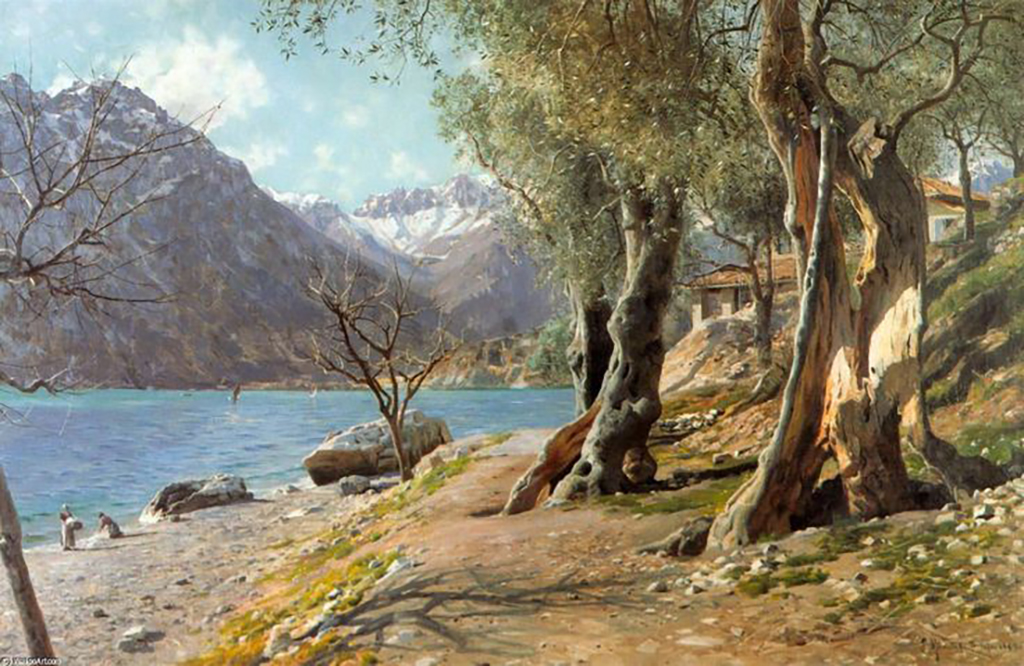
Peder Mørk Mønsted
Peder Mørk Mønsted was a Danish landscape painter (1859-1941) influenced by French Impressionism. His landscapes are the result of long contemplation. Fascinated by lakes and waterways, he produced numerous views of Torbole that often take on the appearance of visions.

Hans Lietzmann
The German painter Hans Lietzmann (1872 – 1955) chose Torbole as his second home. After training as a painter at the Academy of Arts in Berlin, in 1899 he bought a large olive grove in Torbole on the shores of the lake (behind today’s Albergo Paradiso) where he founded a school of nudes from which painters of considerable talent would emerge. The First World War interrupted this experience but Lietzmann returned to Torbole at the end of the conflict. In 1924, he obtained an important commission for the Prussian Bible Society: the creation of 60 Evangelical Scenes, for which he chose a setting in the landscape of Lake Garda. However, the work remained unfinished.
Many of his works remain in Torbole and neighbouring towns: on the facade towards the lake of Casa Beust, one of his frescoes depicts St Anthony preaching to the fish. The German expert Isa Nüssgruber writes of his art as follows:
“Never does a blinding colour appear in Hans Lietzmann’s palette; instead, often those sometimes mysterious flashes of southern light that captivated the painter at a young age on his first encounter with Lake Garda”.
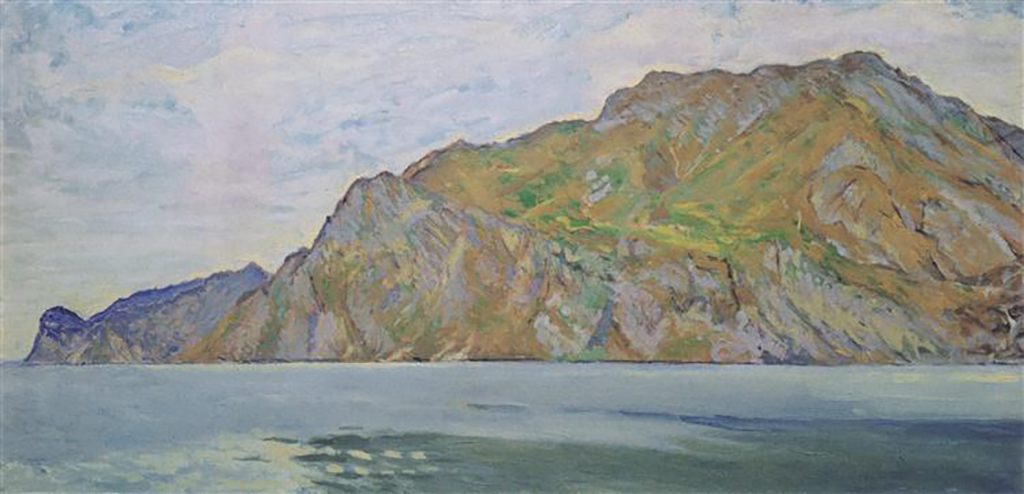
Koloman Moser
Austrian painter representing Art Nouveau in Vienna. In 1904 he travelled to Lake Garda, Verona and Venice for the first time in the company of his future wife. He returned to Torbole in 1912, on which occasion he painted the famous mountain profile now in the Belvedere Museum in Vienna.
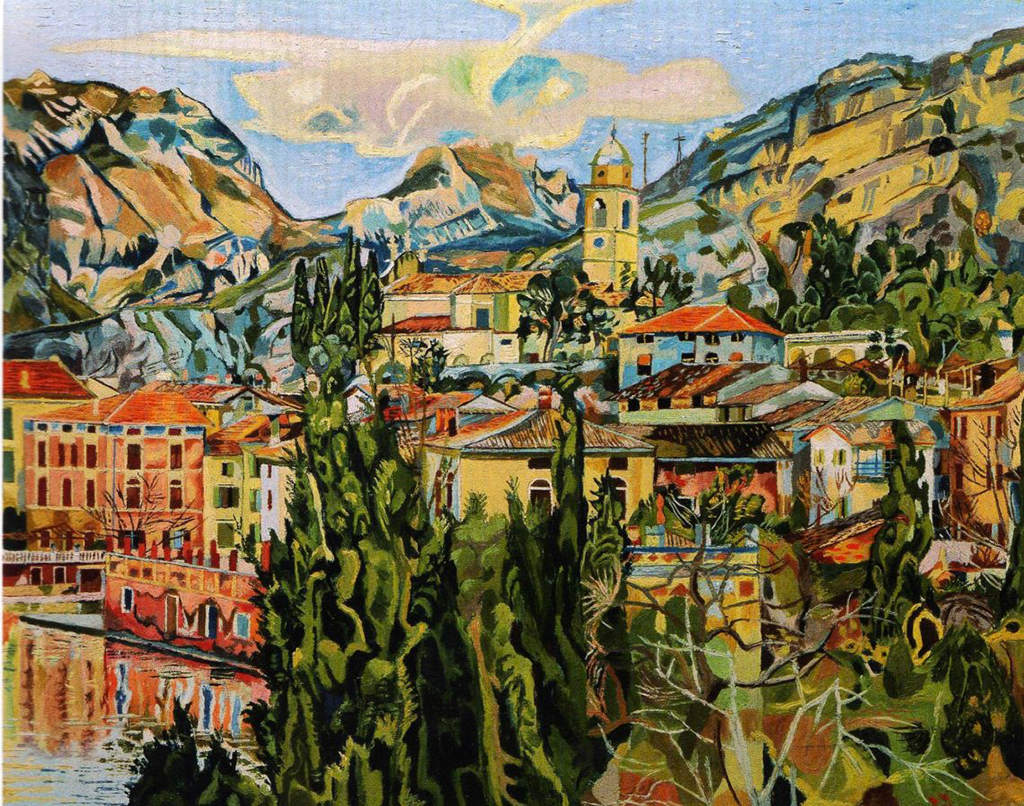
Albert Paris von Gütersloh
Albert Conrad Kiehtreiber (1887 – 1973) was an Austrian painter and writer. He is considered the spiritual father of the Viennese school of Fantastic Realism, which combines clarity and detail – which some have compared to early Flemish painting – with an often religious and esoteric symbolism.
His Torbole is transfigured into a landscape in which the contours of houses, mountains and trees intertwine in a solar and hypnotic inlay.
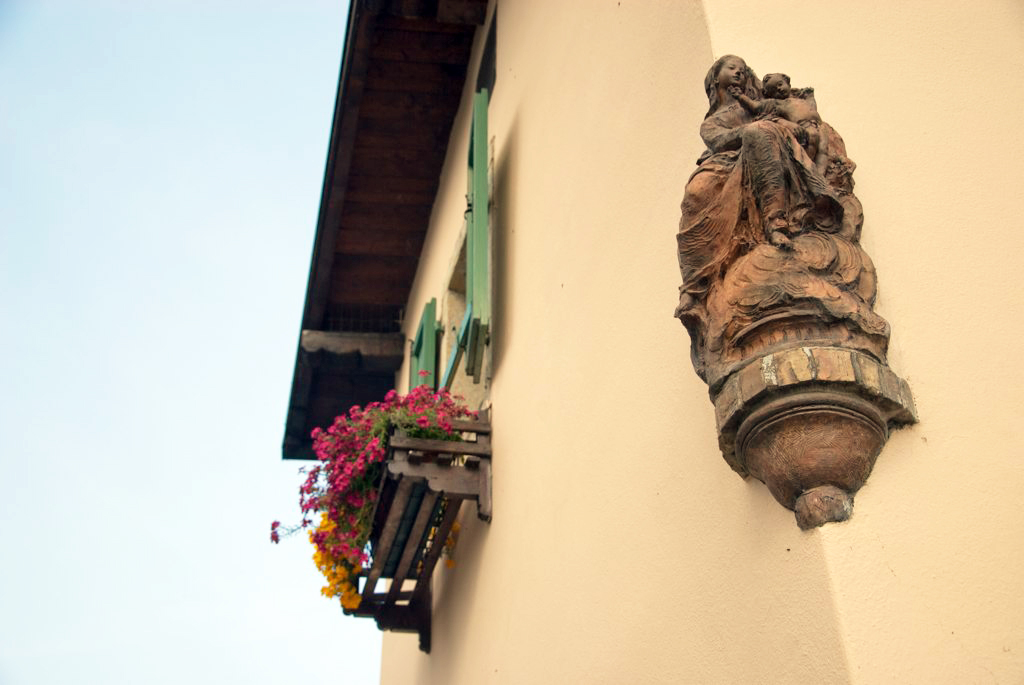
Fernando Cian
We conclude our – by no means exhaustive – roundup of artists who have sung about and portrayed Torbole, its beauty and poetry, by remembering the sculptor Fernando Ciancianaini (1888-1967) aka Cian, who lived in Torbole for a long time. He was descended from an ancient family of sculptors from Carrara and had learned the art of modelling and sculpting in marble from an early age. After refining his art in Paris, he settled permanently in Torbole in a villa by the lake, where he was immediately known for his works in terracotta and bronze. His art was rigidly classical; he mainly devoted himself to religious subjects but did not disdain profane ones. The busts of Dante in the public gardens and of Goethe in Piazza degli Alpini are some of his many creations.
 Booking now
Booking now






